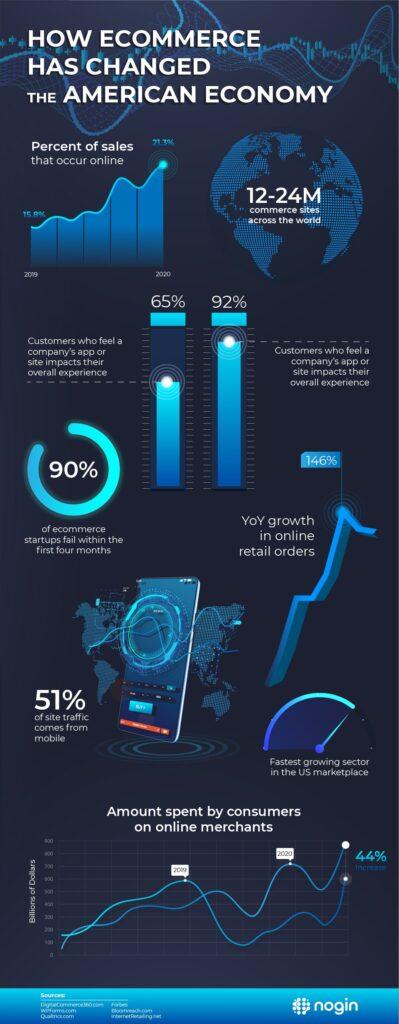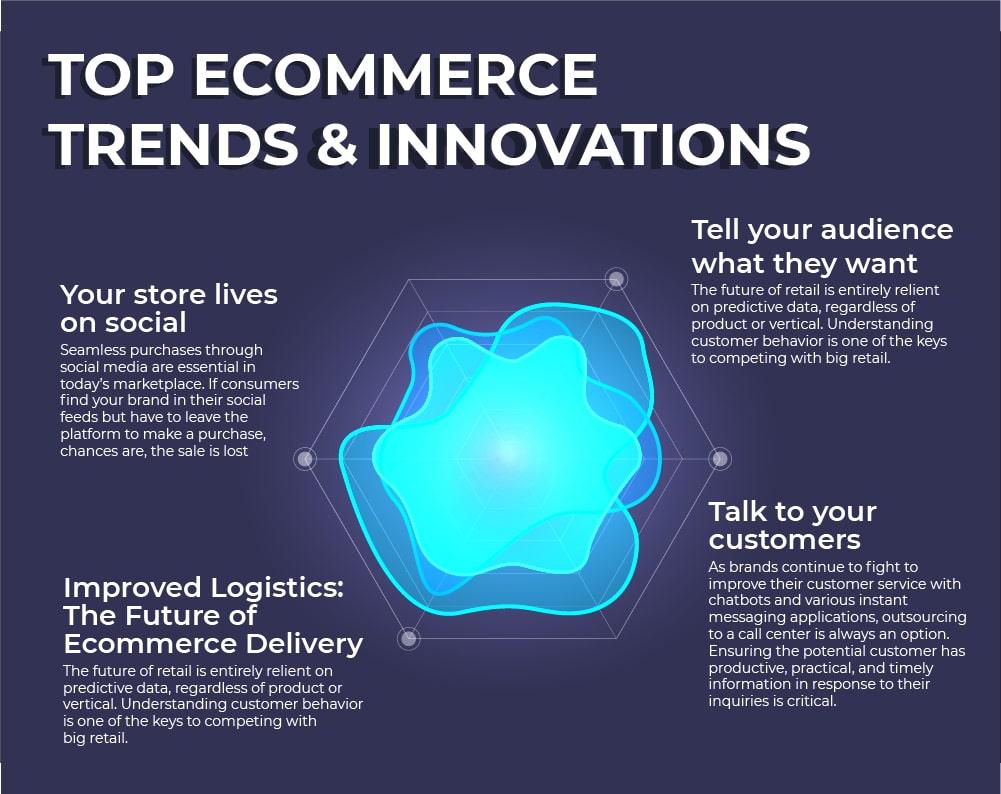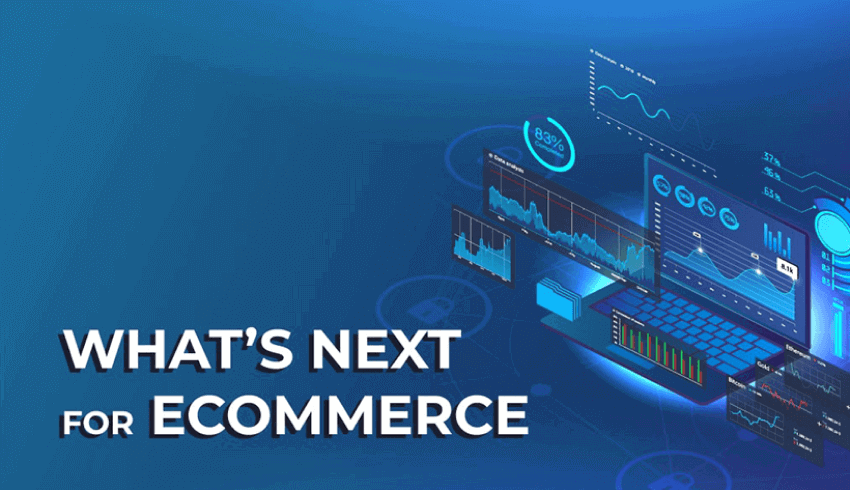The world has changed quite drastically over the first half of 2020. The ongoing pandemic has forever altered the way people work, live, and shop. The ecommerce revolution that was once promised with the dot-com boom of the 90s seems to have finally come to fruition.
People are shopping online more than ever before, and ecommerce is growing and evolving in real-time. Large or small, the digital landscape has forced retailers to overhaul their entire operations and move towards omnichannel software solutions. Large retailers are building their platforms and whole teams of web developers to make the shift, while smaller brands find themselves hamstrung by the development costs and operational shifts necessary to make the change.
So, where does ecommerce go from here?
Every day more and more platforms are popping up to accommodate the need for ecommerce. For every entry point software like Shopify, three new companies pop up. Even Salesforce has moved quickly into the space with its CommerceCloud suite. So how do these platforms compare? How do they distinguish themselves from one another? We know that nothing is certain. This revolution started 30 years ago, and the coronavirus pandemic has exponentially sped up the process.
However, when looking at the last 30 years, it becomes pretty clear where these trends are taking us. Moreover, by analyzing those trends and insights, we can better understand where online retail goes from here. Let’s discuss how ecommerce has transformed business in our country and the latest trends that will guide the future of commerce.
How Has Ecommerce Changed the American Economy?

There are between 12-24 million ecommerce sites across the world, and new merchants continue to enter the marketplace to capitalize on consumer shifts to online retail. In 2020, the new coronavirus ecommerce landscape launched online shopping into the stratosphere. Online shopping accounted for 21.3% of total retail sales in 2020 alone, compared to 15.8% in 2019. Additionally, consumers spent $861.12 billion online with U.S. merchants in 2020, a 44% increase from the $598.02 billion spent in 2019.
Ecommerce is the fastest growing sector in the United States marketplace. Businesses can run more efficient and cost-effective operations using online storefronts by leveraging 3pl ecommerce fulfillment and ecommerce conversion funnels. Also, online retailers have access to a bounty of informative analytics to help them understand their target audience and refine their marketing strategies. They can establish ecommerce KPIs and effectively assess their results month-over-month to improve their operations.
Why is Digital Commerce Important?
Digital commerce is becoming more important for businesses since customers continue to shift their time, attention, and money towards online mediums. It will be tough for a company to survive if they have little online presence and can only rely on foot track for transactions.
Consumers rely on digital content, such as written descriptions, images, and videos, to learn more about the products and services they want to buy. No longer can a shopper ask retail employees for recommendations or physically touch a product before checking out.
Businesses must invest heavily into their online presence and create a dynamic and attractive experience for visitors. 65% of customers feel that a company’s app or website impacts their overall experience. 92% of people also are more likely to purchase from a company that provides an emotional journey.
Merchants must develop a comprehensive online experience and shift budgets towards ecommerce rather than a physical storefront. They have to create a complete marketing plan that encompasses social media, SEO, PPC, and digital content to attract customers from various avenues. They have to cater to mobile shoppers because mobile transactions continue to become more prominent. In fact, 51% of website traffic comes from mobile alone.
If you need help building your online empire, invest in the best ecommerce software and enterprise ecommerce solutions to dominate your market before your competitors take your spot.
What Percentage of Ecommerce Businesses Fail?
Around 90% of ecommerce startups fail within the first four months of operations. Merchants cite the main reasons for failure include poor marketing and search engine visibility. It is especially hard for new brands and merchants to reach their audience if they are battling goliaths in their industry. Many top brands invest millions into marketing to capture and convert leads.
If you want your business to thrive, it is imperative to carve out a niche and develop an effective marketing funnel to draw in your target audience. Check out our guide to learn how to properly scale your ecommerce business from scratch and our ultimate product listing strategies to ensure your customers convert.
The Impact of Ecommerce on Emerging Markets and Consumer Behavior
Ecommerce has changed the way people approach shopping. The ecommerce industry is part of the larger digital ecosystem, and different components influence how consumers find and buy products. Social commerce is an integral part of electronic commerce, and digital social interaction is directly tied to the online shopping experience. For instance, brand partnerships and celebrity collaborations can support a product’s growth and entice consumers to purchase items. The marketing is embedded into social media posting rather than a traditional advertisement.
Online merchants can employ retail pricing strategies coupled with their marketing efforts to entice consumers. People can discover discounted products by searching for particular items in search, and PPC links can display links to exclusive deals. They can also run A/B tests to evaluate the best prices for their products.
Consumers also are much more invested in a company’s mission rather than just their products. For instance, a visitor may feel more compelled to purchase from a particular brand if they work with charitable organizations or humanely produce their products. Ecommerce has transformed how sellers must approach branding and interaction with their customers. They must design a storefront that is not just a place to buy something but an immersive experience to guide consumers on a journey, especially in the luxury ecommerce industry.
How to Grow a Category in Ecommerce
There are many ecommerce myths out there, but there are several strategies that are sure to compel your business to the next level:
- Develop content with high-purchase intent. Once consumers land on your product listings, make sure to include value-based descriptions, high-definition images, and video demonstrations.
- Have a comprehensive marketing plan that encompasses web and search engine optimization, social media ads, and Pay-Per-Click (PPC) ads. Test which channels are best for reaching your audience and generate the best return on ad spend.
- Use a variety of keywords to categorize your product listings. Always have a main category listing but use subcategories to help match user search intent with your product pages.
- Utilize testimonials on your website and compel your customers to leave reviews on your Google My Business listing or product pages. Products with many high-star reviews are an excellent way to demonstrate your product’s quality and build trust with new visitors.
Top Ecommerce Trends and Innovations

Let’s discuss some of the most noteworthy ecommerce trends and innovations in the industry and how you can use them to your advantage:
1. Your Store lives on Social
People live their lives on social media. Whether it’s Facebook, Instagram, Twitter, YouTube, WhatsApp, Tumblr, or another burgeoning platform, most people share their lives on some medium of social media. It’s only natural for shopping to evolve to be a part of that experience.
Over the last year, social media has gained tremendous momentum in the world of ecommerce. According to Forbes, there has been a 146% year-over-year growth in online retail orders alone, and almost all social platforms now have some sort of commerce offering.
Understanding the value of placing products where people shop, Facebook first introduced Marketplace in 2007. Although it may have been a bit ahead of its time as it never really gained traction and was spun off to Oodle, they continued building the platform. They re-introduced a new marketplace in 2017 with the idea of engaging shoppers through social interaction.
Likewise, in March of 2019, Instagram launched an ecommerce checkout feature to allow brands to meet customers where they live. The feature enables users to make product purchases without ever leaving the app while enabling IG brands to build actionable consumer profiles.

Seamless purchases through social media are essential in today’s marketplace. If consumers find your brand in their social feeds but have to leave the platform to make a purchase, chances are, the sale is lost. Whether it’s email marketing, webpage optimization, or social sales, the fewer clicks it take to complete an action, the better, and conversion rates agree. An impulse buy should never take more than three clicks.
Suppose your brand is not utilizing all that social media offers. In that case, you are quite simply missing a critical opportunity to connect with your audience (and future audiences) on a far more profound, emotional level. From chasing trends and hashtags to laser-focused audience targeting and utilizing influencer marketing, brands should be using every tool they can to access those that directly align with their brand.
2. Tell Your Audience What They Want
Predictive analytics is nothing new, but it is primarily utilized by big box stores and those brands with billion-dollar budgets. However, through the growth of Big Data and machine learning, coupled with the surge of online shopping, platforms such as Nogin have helped brands leverage their data to deliver solutions to brands at a much more affordable entry price.
Predictive Analytics allows brands to:
- Predict what people are planning to purchase
- Determine a successful pricing strategy
- Improve logistics
- Grant more significant insights into promotions
- Minimize fraud
The future of retail is entirely reliant on predictive data, regardless of product or vertical. If your brand isn’t utilizing statistical techniques, data mining, predictive modeling, and machine learning to analyze historical data and make predictions relevant to your business, you are left behind. Understanding customer behavior is one of the keys to competing with big retail.
3. Improved Logistics: The Future of Ecommerce Delivery
Consistent delivery across all of your sales channels is pertinent to a brand’s success. When Amazon can ship almost any item within 24 hours at no cost to the brand, this can seem like a daunting task for small to mid-market brands to keep pace. Brands need to self-reflect on what they can deliver and be honest with their customers as to delivery times. That may still leave your brand behind and needing to pay for a logistics solution that can compete, which can shrink profitability.
Finding a solution to handle all three flows of logistics while maintaining competitive SLAs can be difficult. Therefore, your primary focus must start with inventory management; knowing where everything is along your supply chain is critical. Utilizing a system that manages reordering, deliveries, fulfillment, and more is essential. When completed, you will have created that high-level view of your inventory. It becomes time to focus on a delivery service that aligns with your brand’s needs.
Once your brand has determined the necessary services, the next step is to ensure they display them everywhere. They should ensure that they appropriately optimize them for search rendering with quick access to delivery options. Every page should clearly present the offer and a link to the delivery options.
Merchants should display shipping rates, delivery time, and other information clearly and concisely throughout the buyer’s journey. Then repeat it. And repeat it again at checkout. Managing customer expectations can be a brand’s greatest promotional tool.
4. Talk to Your Customers
To put it into terms that Visa gave us:
Getting a customer to your website: $10 in SEO. Getting direct one on one conversation with your potential buyer: Priceless.
However, hiring the staff necessary to handle direct inquiries does have a price. It wouldn’t be financially feasible for many brands to hire an entire call center in-house to deal with direct customer interactions. Therefore many brands have created AI chatbots loaded with answers to common questions to limit human customer relations.
Over the years, these chatbots have become unbelievably proficient in solving customer’s needs, and in the future may be impossible to distinguish between a real human interaction.
As brands continue to fight to improve their customer service with chatbots and various instant messaging applications, outsourcing to a call center is always an option. Either way, ensuring that the potential customer has productive, practical, and timely information in response to their inquiries is once again critical to the success of competing with larger retailers.


